The error code 0x80004005: Unspecified Error is a common issue on Windows 11 that can arise during various operations, such as installing updates, accessing shared resources, or extracting compressed files. This vague error message can be frustrating, but there are several effective methods to resolve it. Below, we'll walk through detailed steps to fix this error and get your system running smoothly again.
1. Reset Windows Update Components and Policies
When encountering the error during Windows Update processes, resetting the Windows Update components and policies can often resolve the issue. This method involves stopping services, renaming problematic folders, resetting network configurations, and restarting services.
Step 1: Open Command Prompt with administrative privileges. Type cmd in the Windows search bar, right-click on Command Prompt, and select Run as administrator.
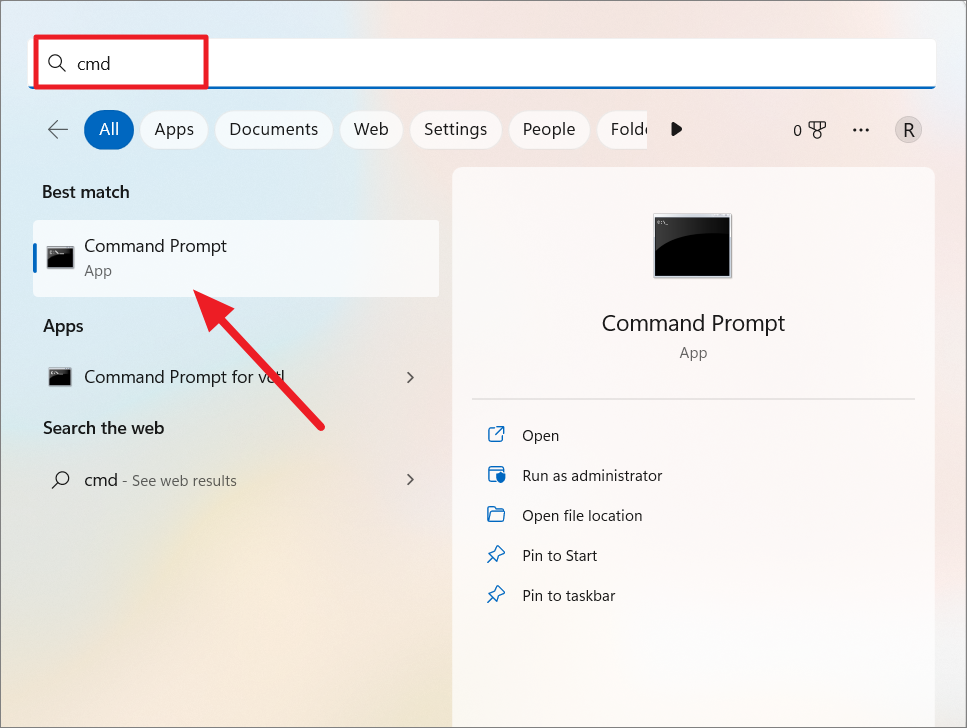
Step 2: Stop essential services by executing the following commands one by one, pressing Enter after each:
net stop bits
net stop wuauserv
net stop appidsvc
net stop cryptsvc
Step 3: Delete the qmgr*.dat files created by BITS using the command:
Del "%ALLUSERSPROFILE%\Application Data\Microsoft\Network\Downloader\*.*"If prompted, type Y and press Enter to confirm.
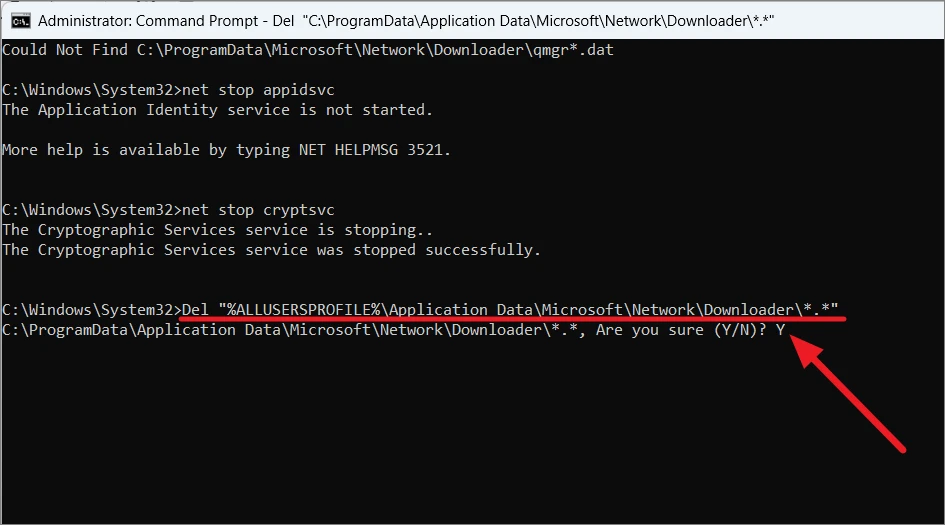
Step 4: Rename the SoftwareDistribution and catroot2 folders by running:
Ren %Systemroot%\SoftwareDistribution\DataStore DataStore.bak
Ren %Systemroot%\SoftwareDistribution\Download Download.bak
Ren %systemroot%\system32\catroot2 catroot2.bak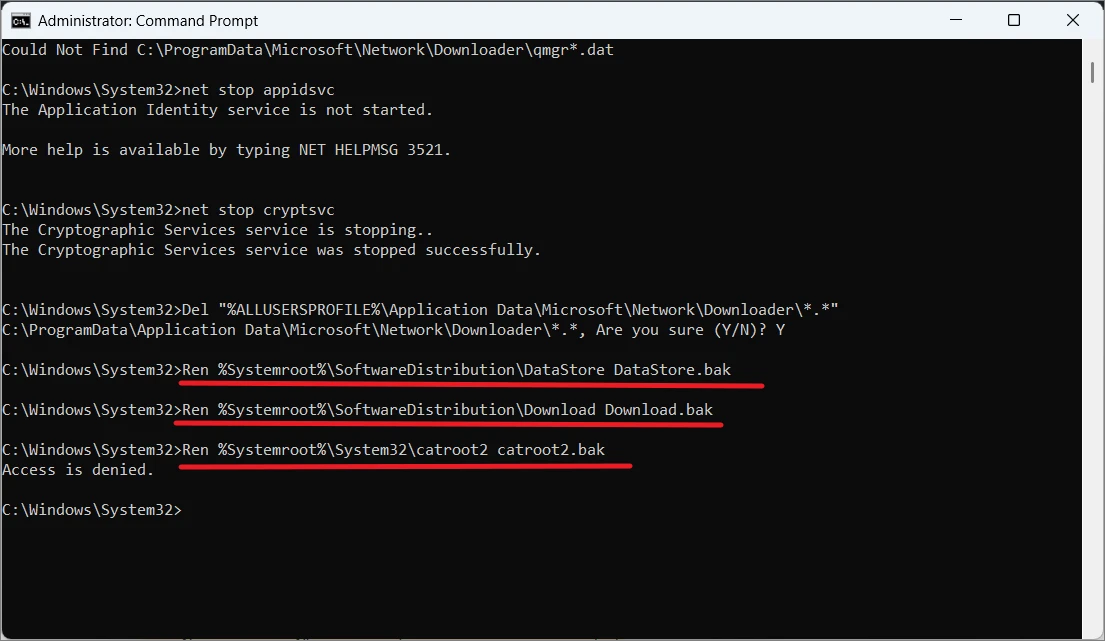
Step 5: Reset BITS and Windows Update services to their default security descriptors with these commands:
sc.exe sdset bits D:(A;;CCLCSWRPWPDTLOCRRC;;;SY)(A;;CCDCLCSWRPWPDTLOCRSDRCWDWO;;;BA)(A;;CCLCSWLOCRRC;;;AU)(A;;CCLCSWRPWPDTLOCRRC;;;PU)
sc.exe sdset wuauserv D:(A;;CCLCSWRPWPDTLOCRRC;;;SY)(A;;CCDCLCSWRPWPDTLOCRSDRCWDWO;;;BA)(A;;CCLCSWLOCRRC;;;AU)(A;;CCLCSWRPWPDTLOCRRC;;;PU)
sc.exe sdset cryptsvc D:(A;;CCLCSWLOCRRC;;;AU)(A;;CCDCLCSWRPWPDTLOCRSDRCWDWO;;;BA)(A;;CCDCLCSWRPWPDTLCRSDRCWDWO;;;SO)(A;;CCLCSWRPWPDTLOCRRC;;;SY)
sc.exe sdset trustedinstaller D:(A;;CCLCSWLOCRRC;;;AU)(A;;CCDCLCSWRPWPDTLOCRSDRCWDWO;;;BA)(A;;CCDCLCSWRPWPDTLCRSDRCWDWO;;;SO)(A;;CCLCSWRPWPDTLOCRRC;;;SY)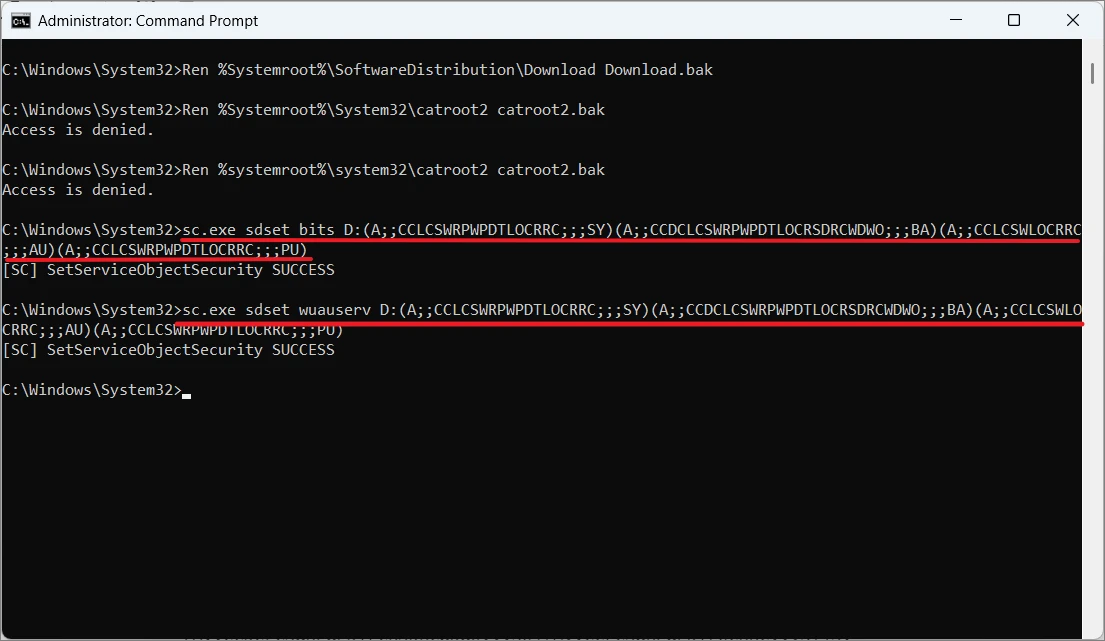
Step 6: Navigate to the System32 directory by typing:
cd /d %windir%\system32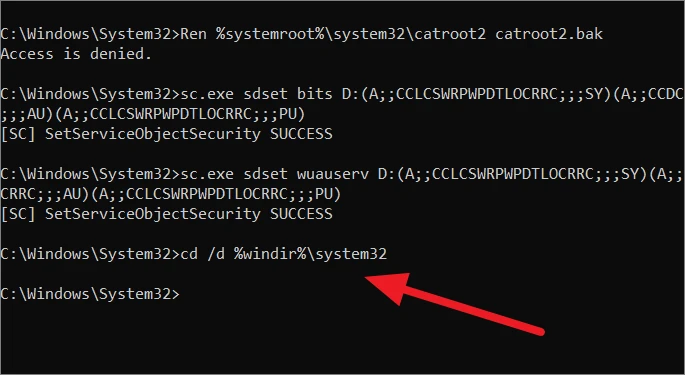
Step 7: Re-register the BITS and Windows Update-related DLL files by running the following commands individually:
regsvr32.exe /s atl.dll
regsvr32.exe /s urlmon.dll
regsvr32.exe /s mshtml.dll
regsvr32.exe /s shdocvw.dll
regsvr32.exe /s browseui.dll
regsvr32.exe /s jscript.dll
regsvr32.exe /s vbscript.dll
regsvr32.exe /s scrrun.dll
regsvr32.exe /s msxml.dll
regsvr32.exe /s msxml3.dll
regsvr32.exe /s msxml6.dll
regsvr32.exe /s actxprxy.dll
regsvr32.exe /s softpub.dll
regsvr32.exe /s wintrust.dll
regsvr32.exe /s dssenh.dll
regsvr32.exe /s rsaenh.dll
regsvr32.exe /s gpkcsp.dll
regsvr32.exe /s sccbase.dll
regsvr32.exe /s slbcsp.dll
regsvr32.exe /s cryptdlg.dll
regsvr32.exe /s oleaut32.dll
regsvr32.exe /s ole32.dll
regsvr32.exe /s shell32.dll
regsvr32.exe /s wuapi.dll
regsvr32.exe /s wuaueng.dll
regsvr32.exe /s wuaueng1.dll
regsvr32.exe /s wucltui.dll
regsvr32.exe /s wups.dll
regsvr32.exe /s wups2.dll
regsvr32.exe /s wuweb.dll
regsvr32.exe /s qmgr.dll
regsvr32.exe /s qmgrprxy.dll
regsvr32.exe /s wucltux.dll
regsvr32.exe /s muweb.dll
regsvr32.exe /s wuwebv.dll
regsvr32.exe wudriver.dll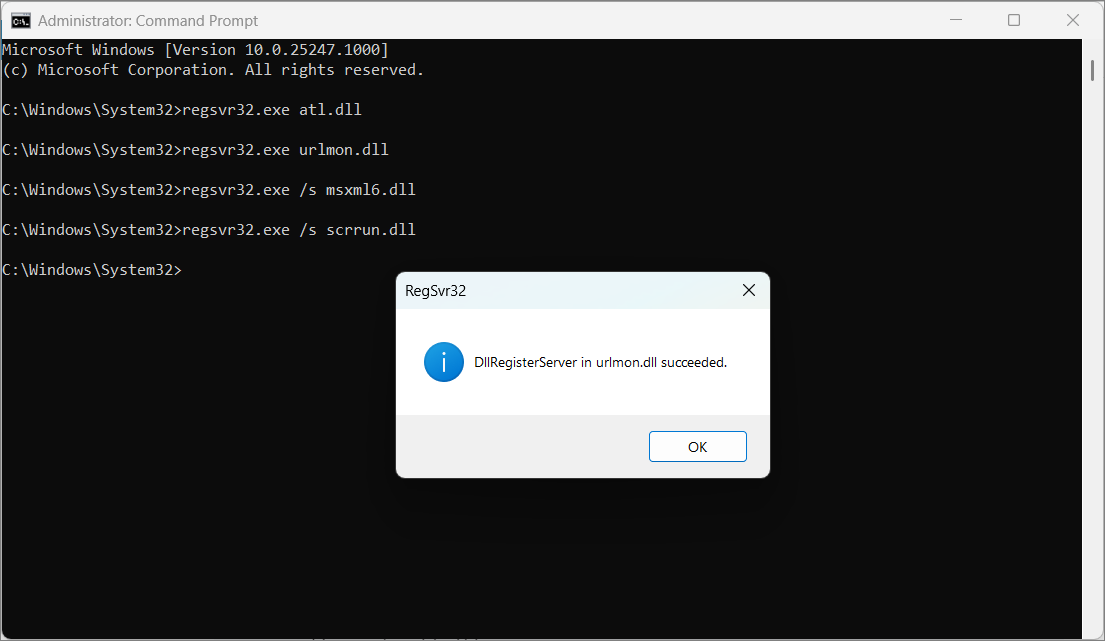
Step 8: Reset the network configurations by running:
netsh winsock reset
netsh winsock reset proxy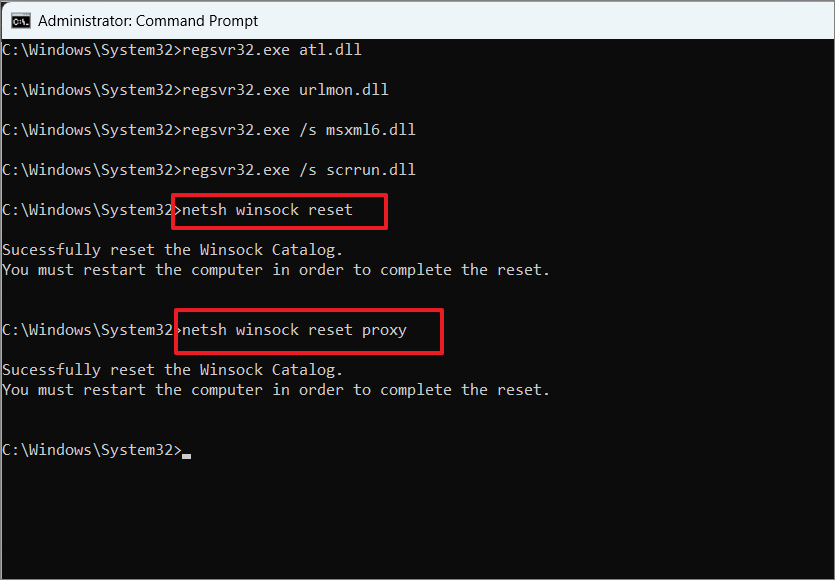
Step 9: Restart the services you stopped earlier with these commands:
net start bits
net start wuauserv
net start appidsvc
net start cryptsvc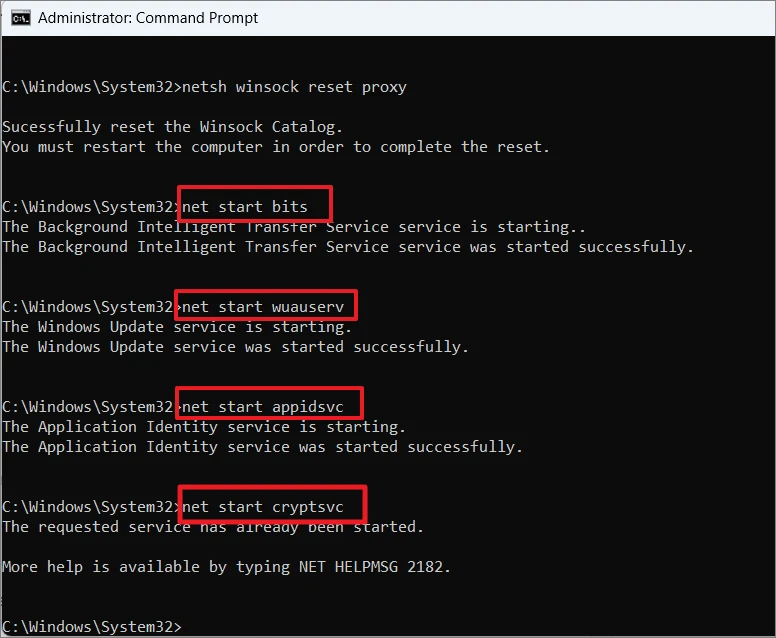
Step 10: Restart your computer to apply the changes. After rebooting, check if the Windows Update error is resolved.
2. Run the System File Checker and DISM Scans
Corrupted or missing system files can trigger the 0x80004005 error. Running the System File Checker (SFC) and Deployment Image Servicing and Management (DISM) tools can repair these files.
Step 1: Open Command Prompt as an administrator as previously described.
Step 2: Run the SFC scan by typing:
sfc /scannowThis process may take some time. Once completed, you will see a message indicating if any corrupt files were found and repaired.

Step 3: If the SFC scan doesn't resolve the issue, proceed with the DISM scan by entering:
Dism /Online /Cleanup-Image /CheckHealthStep 4: Next, perform a more comprehensive scan:
Dism /Online /Cleanup-Image /ScanHealthThis may take several minutes.
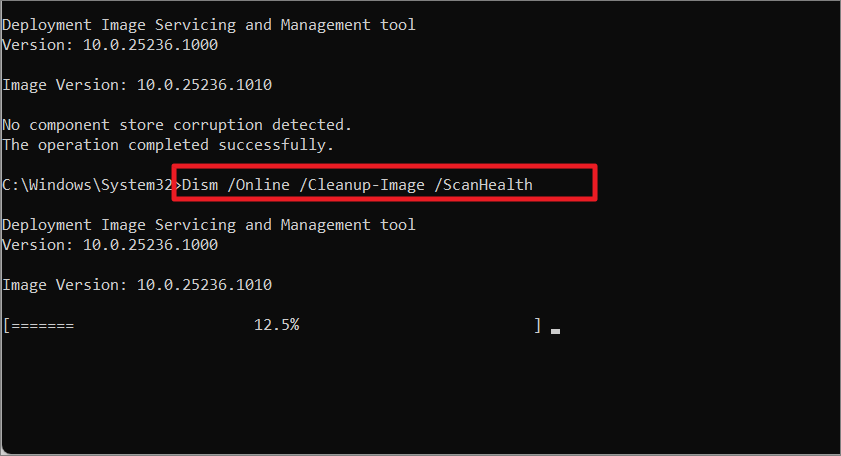
Step 5: Finally, repair the Windows image with:
Dism /Online /Cleanup-Image /RestoreHealthStep 6: After the process completes, restart your computer and check if the error persists.
3. Run the Windows Update Troubleshooter
If the error occurs during Windows updates, the built-in troubleshooter can help identify and fix problems.
Step 1: Open Settings by pressing Windows+I and navigate to System > Troubleshoot.
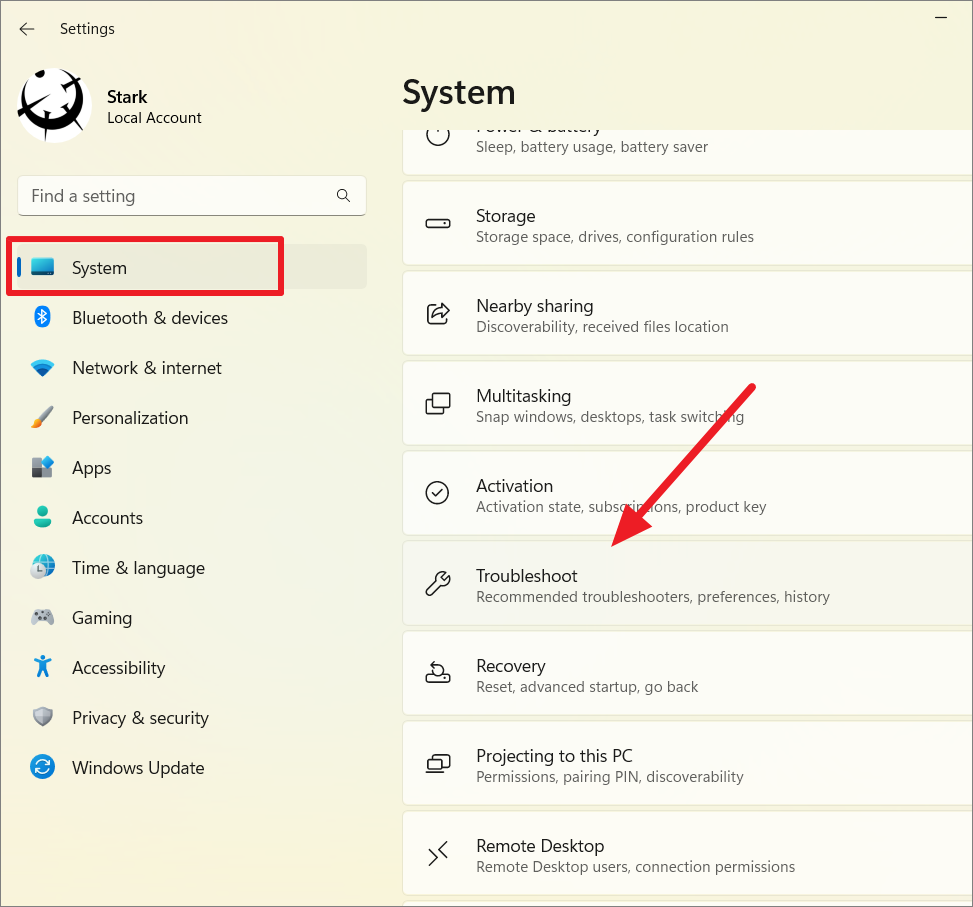
Step 2: Click on Other troubleshooters.
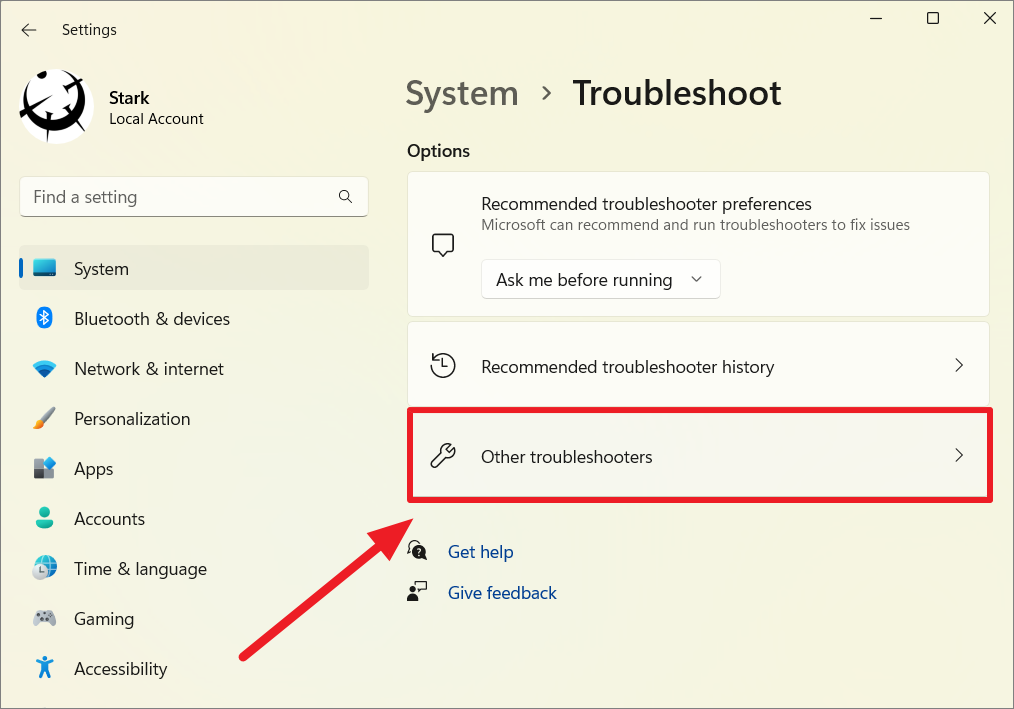
Step 3: Locate Windows Update and click Run next to it.

Step 4: The troubleshooter will scan and attempt to fix any detected issues automatically.
4. Delete Temporary Files
Corrupted temporary files can cause various errors, including 0x80004005. Deleting these files can resolve the problem.
Step 1: Press Windows+R, type %temp%, and press Enter to open the Temp folder.
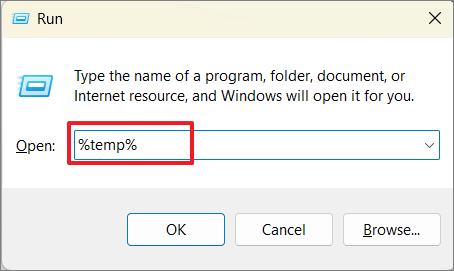
Step 2: Press Ctrl+A to select all files, then press Shift+Delete to permanently delete them. Confirm any prompts that appear.

5. Edit the Windows Registry
If the error occurs while accessing shared resources or moving files, modifying the registry can help.
Warning: Editing the registry can be risky. It's recommended to back up the registry before proceeding.
Step 1: Open the Run dialog with Windows+R, type regedit, and press Enter to open the Registry Editor.
Step 2: Navigate to:
HKEY_LOCAL_MACHINE\SOFTWARE\Microsoft\Windows\CurrentVersion\Policies\SystemStep 3: In the right pane, right-click and select New > QWORD (64-bit) Value.
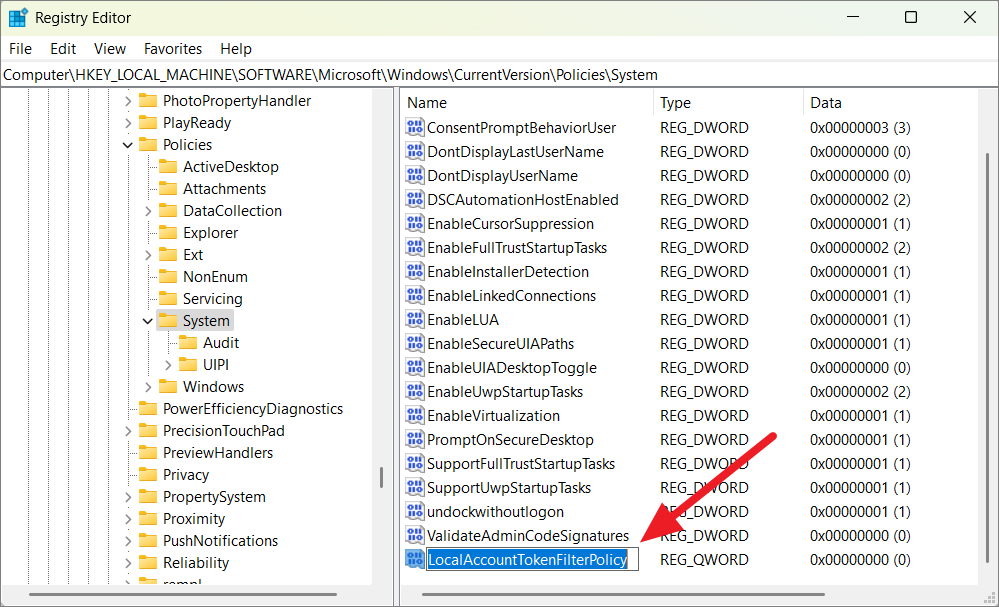
Step 4: Name the new value LocalAccountTokenFilterPolicy.
Step 5: Double-click the new value and set its data to 1. Click OK.
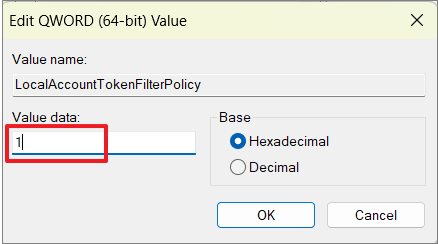
Step 6: Close the Registry Editor and restart your computer.
6. Take Ownership of the File or Folder
Lack of proper permissions can lead to the error when accessing certain files or folders.
Step 1: Navigate to the problematic file or folder, right-click it, and select Properties.
Step 2: Go to the Security tab and click Advanced.

Step 3: Click Change next to the owner.

Step 4: Enter your username and click Check Names to verify, then click OK.
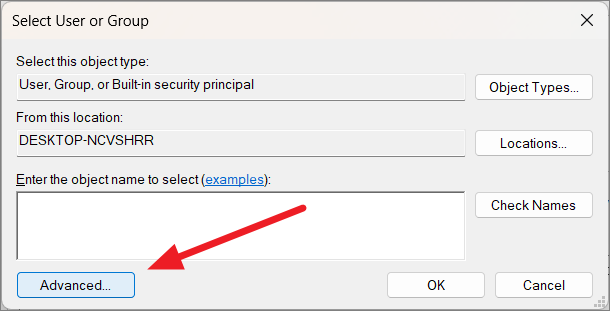
Step 5: Check the box Replace owner on subcontainers and objects, then click Apply and OK.

Step 6: Back in the Advanced Security Settings window, click Add to grant full control.
Step 7: Click Select a principal, enter your username, and click OK.
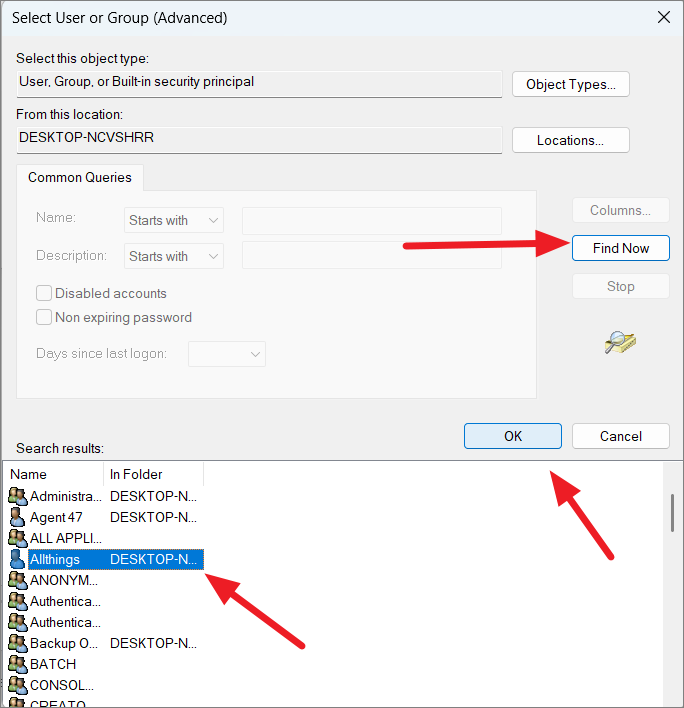
Step 8: Choose Full control under permissions, then click OK, Apply, and OK again.
7. Disable IPv6 Protocol
Disabling IPv6 can resolve network-related instances of the error.
Step 1: Open Settings and go to Network & internet.
Step 2: Select your network connection (Wi-Fi or Ethernet).
Step 3: Click on Hardware properties.
Step 4: Under DNS server assignment, click Edit.
Step 5: Toggle off IPv6 and click Save.
8. Re-register jdscript.dll and vbscript.dll
If the error occurs while extracting compressed files, re-registering these DLL files might help.
Step 1: Open Command Prompt as an administrator.
Step 2: Run the following commands one by one:
regsvr32 jscript.dll
regsvr32 vbscript.dll
Step 3: Restart your computer.
9. Run the Windows File and Folder Troubleshooter
For errors related to file operations like renaming or moving, this troubleshooter can help.
Step 1: Download the Windows File and Folder Troubleshooter from the Microsoft website.
Step 2: Run the downloaded winfilefolder.DiagCab file.
Step 3: Click Advanced, check Apply repairs automatically, and click Next.
Step 4: Select the problems you're experiencing and proceed with the on-screen instructions.
10. Use a Third-Party Archiving Tool
If you're encountering the error while extracting files, switching to a dedicated archiving tool like WinRAR or 7-Zip can help. These tools handle various archive formats more efficiently than the built-in Windows extractor.
11. Disable Notifications in Outlook
Error 0x80004005 can occur due to Outlook's notification settings.
Step 1: Open Outlook and click on File > Options.
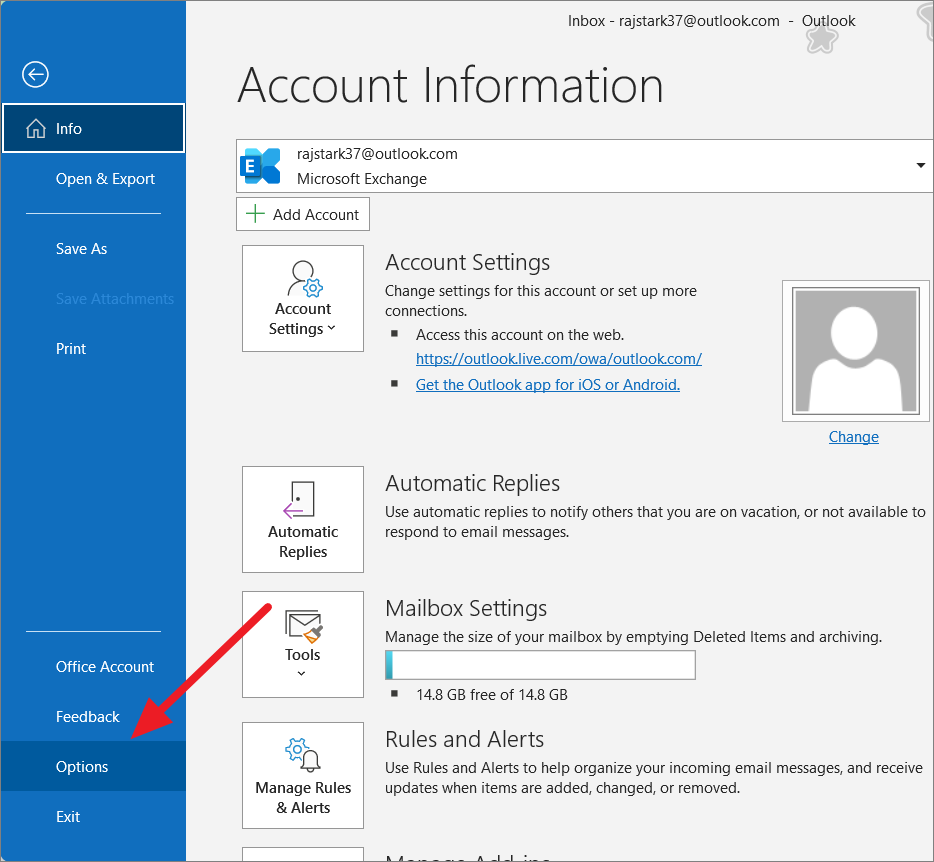
Step 2: Navigate to the Mail tab.
Step 3: Scroll to Message arrival and uncheck Display a Desktop Alert.
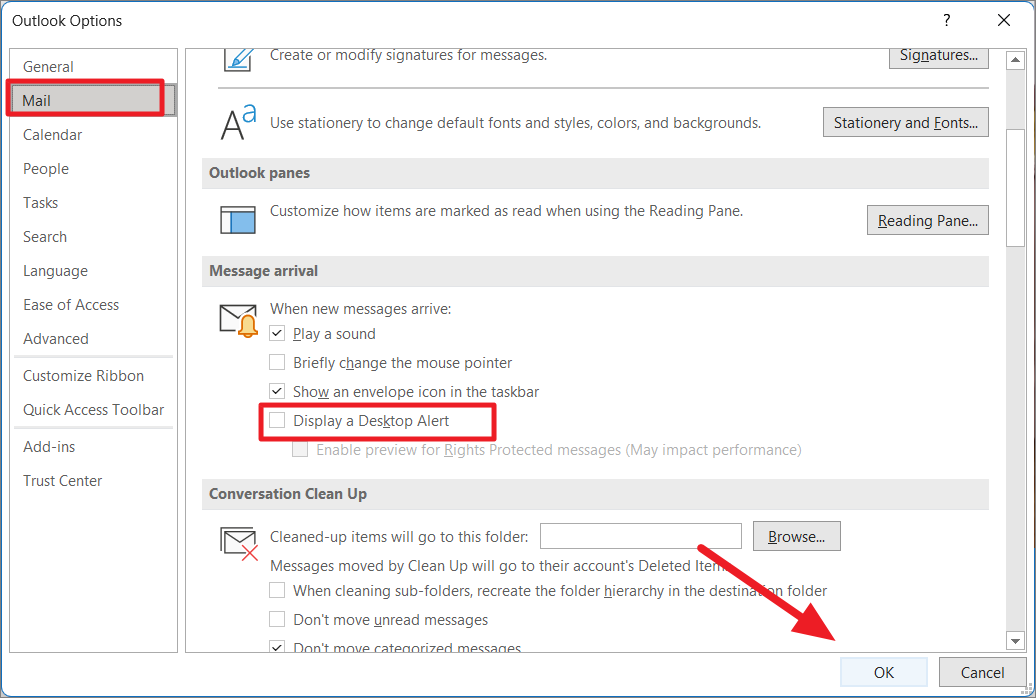
Step 4: Click OK to save the changes.
By following these methods, you should be able to resolve the 0x80004005 error on your Windows 11 PC. If the problem persists, consider reaching out to Microsoft Support or seeking professional assistance.






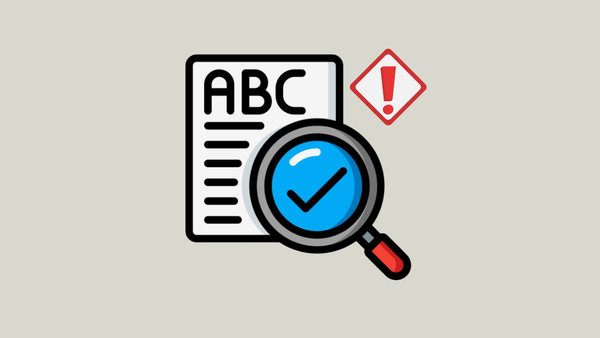
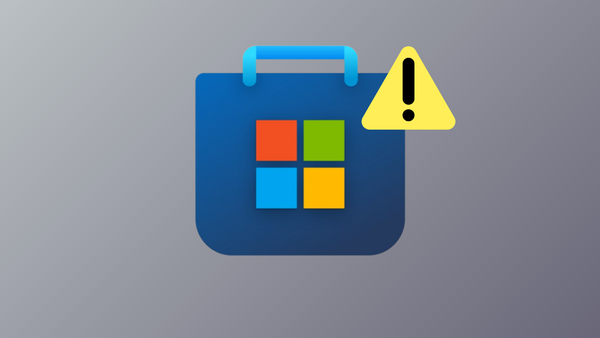
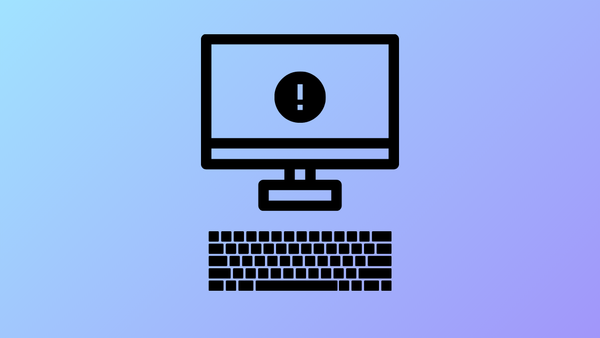
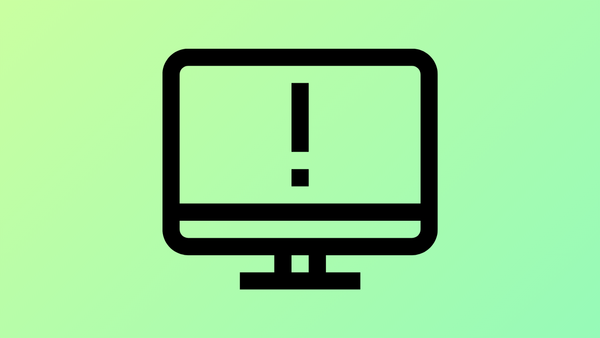
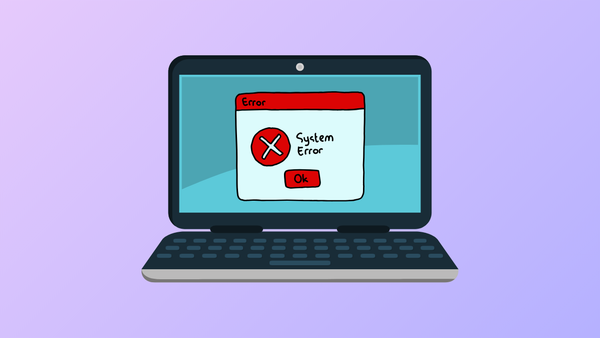
Member discussion